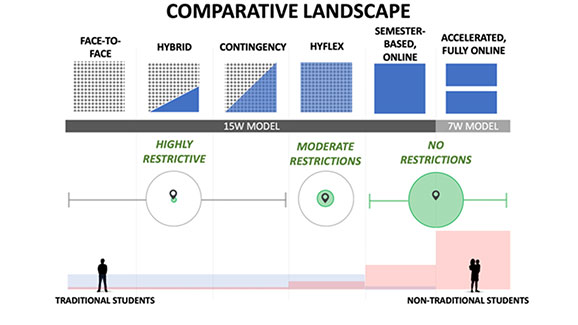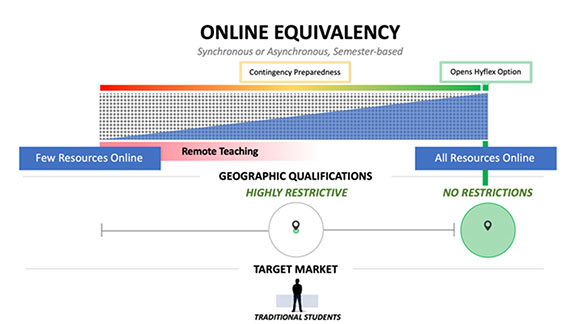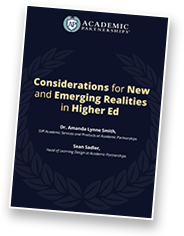Part Two of Three: Articulating Goals and Definitions
In this second part of our white paper on the rapidly changing landscape of higher education and online equivalency and preparedness planning, we explain the importance of clearly defined terminology as a basis for determining the types of programs to implement.

Summary of key findings:
Before administrators and university leaders can assist with implementing online equivalency and remote teaching strategies for the fall, a common vocabulary is needed to help define what these new realities are—and what they aren’t.
Indeed, new and emerging definitions are perhaps one of the greatest challenges. The terms “face-to-face”, “online” and “blended,” for instance, don’t do justice to the language required to navigate the spectrum of models emerging under the umbrella of what we’ll refer to here as “online equivalency.” Online equivalency includes everything from remote teaching to hyflex—a term that refers to allowing each individual student to choose whether they want to attend class online or in person. Clearly articulating definitions in relation to online equivalency can help to determine what types of development strategies are needed in direct relationship to the university’s appetite for contingency preparedness.

As a university’s contingency preparedness plans increase with more resources offered online, the university is better positioned to offer fully online (asynchronous) programs and thus reach more students in later stages of implementation. Accelerated models further promote growth opportunities by reaching yet an even greater market segment of non-traditional students seeking highly flexible, quality, affordable, workforce-relevant online programs.
